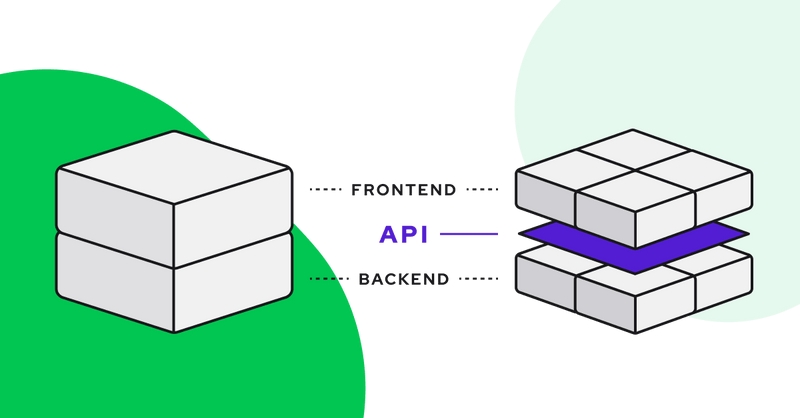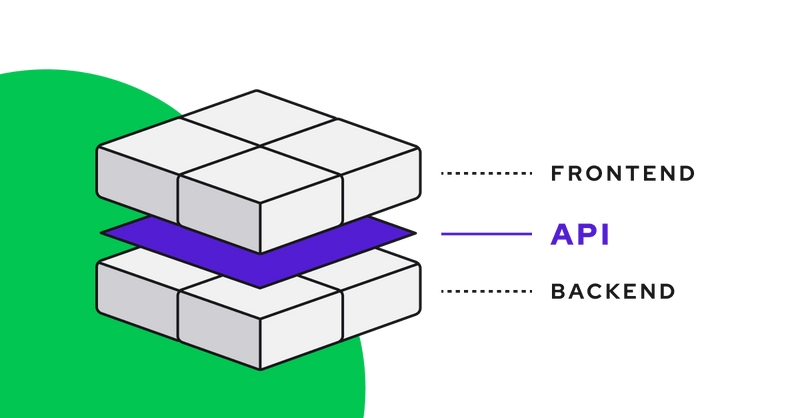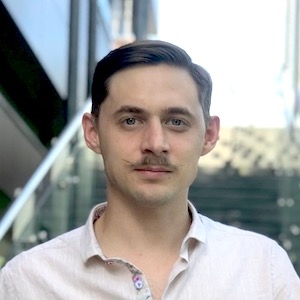The type of your ecommerce architecture can define your online store’s success. What essential elements create a robust ecommerce infrastructure, and how do they impact your business’s growth and customer satisfaction? We tackle these questions by analyzing the critical elements: frontend, backend, and data storage, revealing their combined role and place in the bigger structure.
Key takeaways
- Ecommerce architecture consists of frontend presentation, backend business logic, and data storage, with each playing a critical role in providing a seamless and scalable customer experience.
- Modern ecommerce architectures like microservices, composable, and headless commerce allow businesses to be more agile and innovative, moving away from the limitations of traditional monolithic structures.
- Utilizing modern tools that embrace headless and composable architectures enables businesses to create customizable, efficient, and future-ready ecommerce systems that adapt to market changes and integrate new technologies quickly.
Building blocks of ecommerce architecture
At the heart of every successful ecommerce store is a solid ecommerce site architecture, the critical framework that supports every customer interaction, transaction, and experience. Solution architects understand that the architecture is more than a design; it’s the foundation that enables an ecommerce store to function effectively.
Comprising frontend, backend, and data storage components, this ecommerce project architecture is a trio of functionalities that work together to create a seamless customer experience. Each element, from the user interface to the business logic and data repositories, is essential in the ecommerce operation.
The frontend: The role of user interface in ecommerce
The frontend is where customers first interact with an ecommerce store. It’s the presentation layer that provides visual appeal and ease of navigation, playing a vital role in customer experience and sales. The frontend is where the user experience unfolds, inviting customers to engage with the store.
A quality user interface is crucial for creating an experience that helps customers easily find and purchase products. It involves using ecommerce software architecture to streamline processes such as inventory management and optimizing for search engines. The balance between appearance and usability is what makes an online store effective.
The backend: Business logic
The backend is where the ecommerce website's core functions operate. It's where data processing and transactions take place, inventory levels are managed, and orders are processed efficiently. The backend is the support system of the ecommerce operation, ensuring that all functions, from payment processing to order fulfillment, run smoothly.
A robust ecommerce architecture design improves the platform’s performance, scalability, and security. It allows for adjustments to the system to meet changing business needs and market conditions, keeping the backend reliable and innovative.
Data Storage: Keeping customer data safe and accessible
In ecommerce, data is crucial. Data storage is responsible for safeguarding customer information and business insights. It ensures sensitive data is protected and only accessible to authorized users, maintaining customer privacy.
For example, Alokai Cloud offers the following features:
- Scalability and security
- Geofencing
- DDoS protection
- Automatic daily backups
- Compliance with security standards such as ISO & GDPR
- Alokai Cloud ensures your ecommerce store’s data is secure and efficiently managed.
Exploring different ecommerce platform architectures
There are several common ecommerce architectures, each with its own set of strengths and weaknesses. The choice between a monolithic ecommerce architecture, agile microservices, or adaptive composable architecture can significantly influence the trajectory of an online business. This decision hinges on factors like scalability, customizability, and cost-effectiveness, which guide businesses toward the architecture that best matches their vision and strategy.

Transitioning from monolithic systems
Shifting away from monolithic architecture means recognizing the limitations that have historically restricted businesses to a single, cumbersome codebase. Such traditional systems can inhibit innovation and slow a business's ability to adapt to the evolving ecommerce environment. Monolithic structures can act as barriers to growth, locking companies into a single service provider and hindering rapid response to market demands.
Embracing more flexible and scalable architectures is a strategic move that has become essential for survival in a marketplace where customer experiences and operational agility are crucial.
Microservices and composable architecture
The adoption of microservices architecture represents a new direction for ecommerce businesses. This approach involves breaking down the ecommerce system into small, independent services that communicate through APIs. Microservices and composable architectures offer the flexibility to quickly respond to market changes and develop new services based on customer needs, supporting a resilient digital commerce ecosystem.
Businesses adopting these architectures can enjoy the freedom to expand and innovate, ensuring their ecommerce platforms stay competitive.
Read more about the benefits of microservices architecture.
Headless commerce architecture
Headless commerce architecture separates the frontend from the backend, allowing developers to create user experiences without the constraints of traditional systems. This architecture enables a more responsive platform customized to the needs of today's consumers.

Headless commerce is a significant shift that enables businesses to redefine customer engagement. By supporting flexible frontends and omnichannel sales strategies, headless architecture places ecommerce ventures at the leading edge of the market.
Benefits of headless commerce
The separation of frontend and backend in headless commerce provides several advantages:
- It enables brands to innovate and try new customer experiences.
- It offers the agility to update the frontend without impacting backend operations.
- It fosters rapid innovation and helps businesses stay competitive.
Additionally, the robust infrastructure of a headless system, focusing on fault tolerance and service availability, contrasts with the challenges of monolithic systems. It serves as a foundation for resilience, ensuring that ecommerce platforms can meet the demands of the digital age while delivering outstanding customer experiences.
Read more about the benefits of headless commerce.
Success stories with headless solutions
Examples of successful headless commerce implementations can be more illustrative than theoretical discussions. Brands like White Stuff and Zadig & Voltaire have transformed their ecommerce platforms using technologies like Alokai, improving extensibility and overcoming performance challenges.
White Stuff has streamlined customer experiences through digital transformation, while Zadig & Voltaire achieved a 72% increase in mobile conversions, demonstrating the effectiveness of headless commerce.
Crafting a scalable ecommerce architecture
In the competitive world of ecommerce, scalability is a key factor, ensuring that an online store can adapt to a growing audience. A scalable ecommerce architecture is crucial to a business’s ability to innovate and expand without being hindered by performance limitations or outdated systems. It is vital for long-term success and avoiding future system bottlenecks.
Evaluating an ecommerce site’s architecture for scalability is important in planning for growth and expansion without affecting the performance of the digital storefront. It involves choosing an architecture that aligns with long-term business goals and allows continuous improvement.
Selecting the best architecture for your needs
Choosing the right ecommerce architecture requires careful consideration of the business’s needs and objectives. The decision should be based on finding a solution that fits the company's requirements and strategic plans. It is important to avoid unnecessary complexity and expense while ensuring that the architecture meets non-functional requirements and supports sustained success.
While headless architecture is modern, it is not suitable for every business. To ensure a successful outcome, it is essential to evaluate the company's digital maturity and development capabilities before adopting headless commerce.
Ensuring room for expansion
As the ecommerce landscape grows, scalable architectures like headless and composable commerce become important for businesses exploring new markets. These architectures allow for growth and the ability to adapt to market changes without being constrained by monolithic systems.
Modern ecommerce systems, whether two-tier, three-tier, or composable architectures, provide security and performance while allowing for easy integration with other technologies. Scalability is an integral part of a well-designed ecommerce architecture.
The Alokai advantage: embracing future-ready ecommerce architectures
Alokai is at the forefront of ecommerce innovation, using composable and headless architectures to deliver customizable, scalable, and optimized ecommerce experiences. By following MACH architecture principles, Alokai prepares businesses for future industry trends.

With Alokai, businesses are ready to face the challenges and opportunities of the digital economy. Alokai adheres to advanced technical standards, ensuring its clients are up-to-date and even leading the industry.
From frontend to full stack: Alokai's customizable storefront
Alokai provides businesses with customizable storefronts through composable architecture, enabling the creation of unique and engaging customer experiences. Integrating existing technology stacks is seamless, allowing for easy updates and enhancements.
By using Alokai’s services, businesses can improve their online stores, introduce new integrations more quickly, reduce time to market, and confidently approach the future.
Cost efficiency and operational excellence with Alokai
Choosing Alokai’s architectural services demonstrates a commitment to cost efficiency and operational excellence. Moving away from monolithic architectures, Alokai offers a cost-effective alternative that aligns with current market demands. This shift not only supports lean business principles but also allows for investment in growth and innovation.
Headless commerce with Alokai provides several benefits:
- It simplifies the development process and makes it easier for developers to learn new technologies.
- It improves operational excellence within an organization.
- It enables teams to concentrate on creating excellent user experiences instead of dealing with complex backend changes.
Summary
Exploring the various aspects of ecommerce architecture, we've identified the essential elements of a well-functioning online store. The user interface is the customers' first point of contact, while the backend ensures that transactions and data processing are executed efficiently. Secure data storage is another key component, safeguarding sensitive customer information.
The landscape of digital commerce is ever-changing, and adopting scalable and advanced architectures is critical. Alokai is at the forefront, providing customizable, cost-effective, and efficient solutions that equip businesses to excel in the competitive ecommerce space. By choosing an architecture that supports growth and operational excellence, businesses are positioned to succeed.













